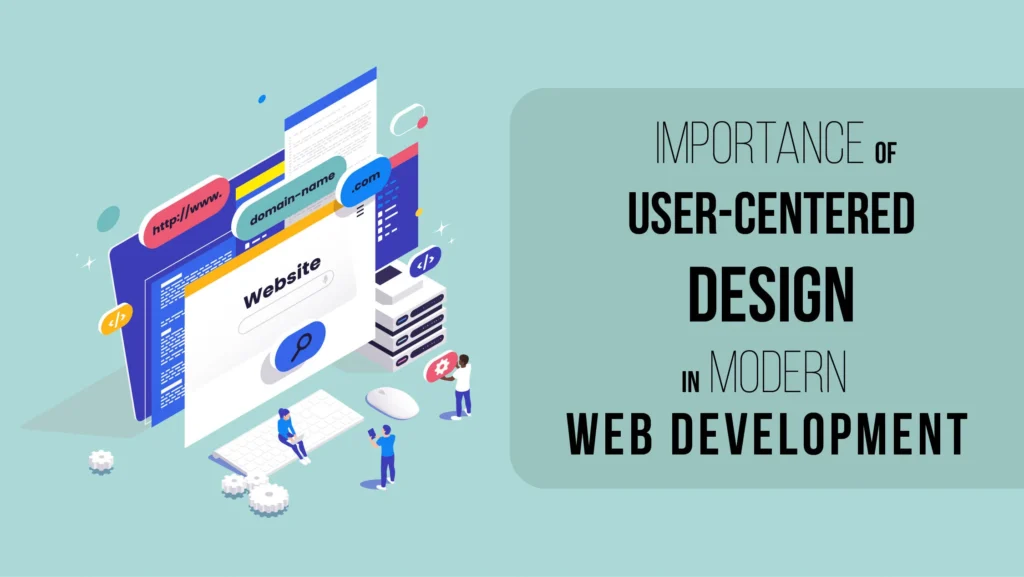
Table of Contents
In today’s digital age, where websites and applications are ubiquitous, user centered design (UCD) has emerged as a pivotal principle in modern web development. This approach places the user at the heart of the design process, ensuring that the end product is not only functional but also intuitive and enjoyable to use. The importance of user-centered design in modern web development cannot be overstated, as it directly impacts user satisfaction, engagement, and ultimately, the success of digital products.
Understanding User-Centered Design
User-centered design is a framework that prioritizes the needs, preferences, and limitations of end-users at every stage of the design and development process. Unlike traditional design methodologies that may focus primarily on aesthetics or technical feasibility, UCD emphasizes usability and user experience (UX). The process involves iterative testing and feedback, ensuring that the final product aligns with user expectations and provides a seamless experience.
Enhancing User Satisfaction and Engagement
One of the primary benefits of UCD is its ability to enhance user satisfaction. When users find a website or application easy to navigate and intuitive to use, they are more likely to have a positive experience. This positive interaction fosters a sense of trust and reliability, encouraging users to return to the site or app. In contrast, a poorly designed interface can frustrate users, leading to high bounce rates and diminished user loyalty.
Improving Accessibility and Inclusivity
A user-centered approach inherently promotes accessibility and inclusivity. By considering a diverse range of users, including those with disabilities, UCD ensures that digital products are usable by as many people as possible. This inclusivity not only broadens the potential user base but also aligns with ethical and legal standards. Features such as screen reader compatibility, keyboard navigation, and adjustable text sizes are all outcomes of a user-centered design process that values accessibility.
Boosting Business Success
For businesses, the implementation of UCD can lead to significant commercial advantages. A well-designed user experience can differentiate a product from its competitors, driving customer acquisition and retention. Satisfied users are more likely to recommend a product to others, generating positive word-of-mouth and organic growth. Moreover, user-centered design can reduce development costs in the long run. By identifying and addressing usability issues early in the design process, businesses can avoid costly redesigns and fixes after launch.
Facilitating Efficient Development Processes
User-centered design is inherently iterative, involving continuous testing and refinement based on user feedback. This iterative process allows for the early detection of potential issues, facilitating more efficient development. By incorporating user feedback at each stage, developers can make informed decisions, prioritizing features and functionalities that truly matter to the end-users. This approach minimizes the risk of developing redundant or unwanted features, ensuring that resources are allocated effectively.
Adapting to Changing User Needs
The digital landscape is constantly evolving, with user expectations and preferences shifting over time. A user-centered design approach equips developers with the tools to adapt to these changes. By maintaining an ongoing dialogue with users and continually testing and refining the product, businesses can stay ahead of trends and ensure their digital offerings remain relevant and engaging. This adaptability is crucial in a competitive market where user needs and behaviors are in constant flux.
Fostering Innovation
User-centered design fosters a culture of innovation by encouraging designers and developers to think creatively about how to solve user problems. By focusing on the user experience, teams are driven to explore new technologies, design patterns, and interaction models. This innovation is not just about adding new features but about enhancing the overall user journey, creating products that delight and inspire users.
CONCLUSION
User-centered design is an essential component of modern web development. By prioritizing the needs and preferences of users, this approach enhances satisfaction, accessibility, and engagement, leading to better business outcomes. Moreover, UCD facilitates efficient development processes, fosters innovation, and ensures digital products can adapt to changing user needs. As the digital landscape continues to evolve, embracing user-centered design will be crucial for creating successful, user-friendly websites and applications that stand the test of time.
Read More:
Unlocking the Power of Mobile Friendly SEO: Best Practices for Optimal Performance
Transformative Trends in Digital Marketing SEO 2024
FAQs
Q1. What is user-centered design (UCD)?
User-centered design is a framework that prioritizes the needs, preferences, and limitations of end-users throughout the design and development process. It emphasizes usability and user experience (UX) through iterative testing and feedback.
Q2. Why is user-centered design important in modern web development?
User-centered design is crucial because it directly impacts user satisfaction, engagement, and the success of digital products. It ensures that websites and applications are not only functional but also intuitive and enjoyable to use.
Q3. How does user-centered design enhance user satisfaction?
User-centered design enhances satisfaction by creating websites and applications that are easy to navigate and intuitive to use, fostering positive user experiences and encouraging return visits.
Q4. What is the iterative process in user-centered design?
The iterative process in UCD involves continuous testing and refinement based on user feedback. This allows for early detection of potential issues, facilitating more efficient development and ensuring that features align with user needs.
Q5. What role does innovation play in user-centered design?
User-centered design fosters innovation by encouraging teams to think creatively about solving user problems. It drives the exploration of new technologies, design patterns, and interaction models, enhancing the overall user journey.